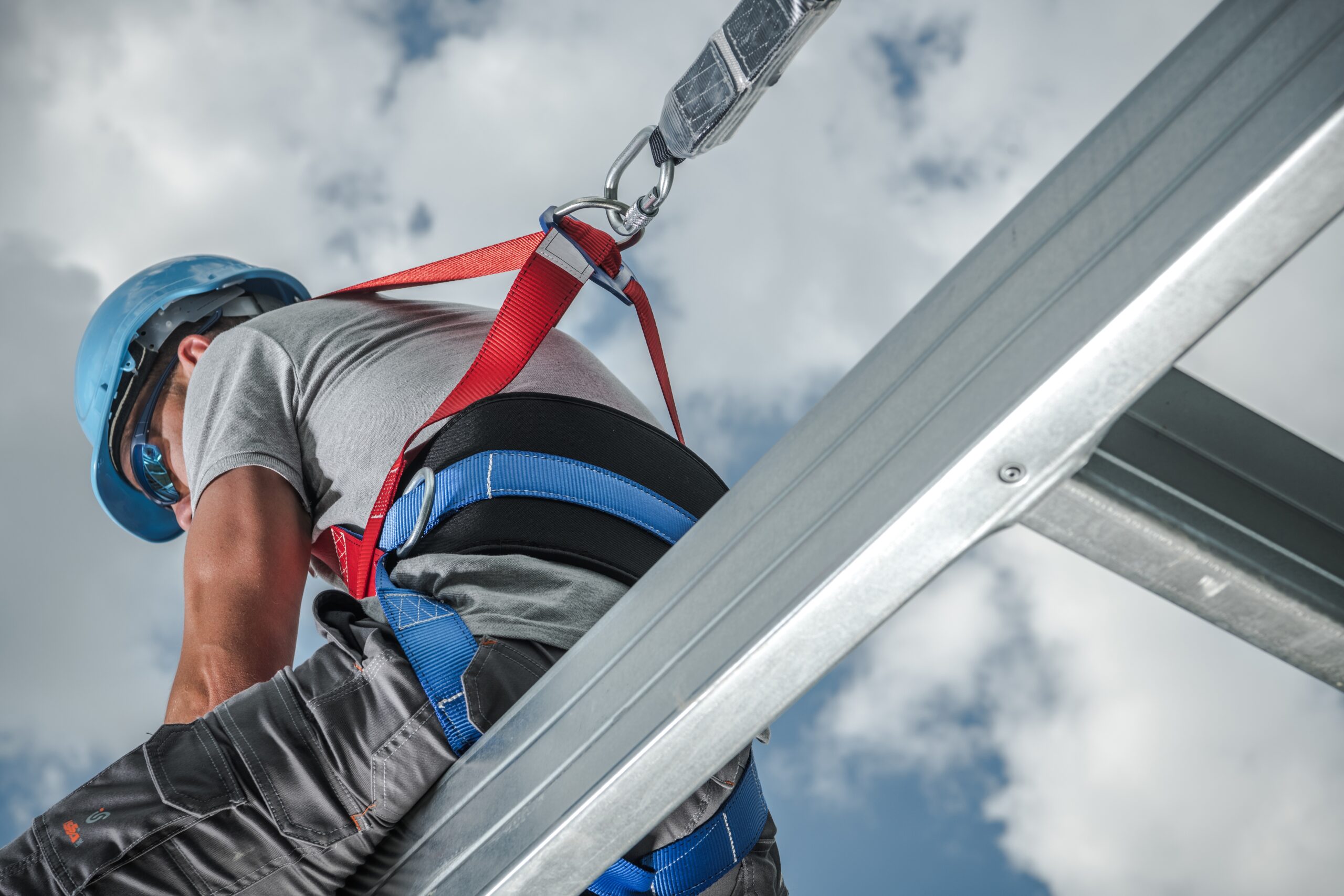Avoid Fines: What You Must Know About Working At Height Regulations In UK
Working at height regulations in UK are legal rules designed to keep people safe when they are working above ground level. If you or your staff ever use ladders, scaffolding, or any raised platform to carry out tasks, these laws apply to you. The rules are part of the Work at Height Regulations 2005, and they were created to prevent injuries and deaths caused by falls, which are sadly still one of the most common causes of serious accidents at work.
These regulations apply to employers, contractors, and anyone in control of work at height. Whether you run a construction company, manage a warehouse, or oversee building maintenance, you have a duty to protect your team from the risks of falling. That means using proper equipment, giving staff the right training, and carrying out regular safety checks.
Many businesses don’t realise they’re breaking the law until it’s too late. A simple oversight, like not securing a platform or using the wrong type of ladder, can result in serious fines, stop-work notices, or even legal action.
In this article, we’ll explain what the working at height regulations in UK really mean, who they apply to, and what you must do to avoid getting caught out. We’ll also look at common mistakes, how to stay compliant, and when to get help from a professional.
If you’ve ever wondered whether your site is fully up to standard, or you’ve been meaning to double-check your team’s safety gear, you’re in the right place.
Why These Regulations Exist And Who They Apply To
The working at height regulations in UK were created to stop avoidable injuries and deaths. Falls from height are still one of the top causes of serious accidents at work, and these laws are there to make sure every employer and worker knows what to do to keep everyone safe.
These rules apply to anyone responsible for managing or carrying out work above ground level. That could be a site manager in construction, a facilities team handling rooftop repairs, or a business owner using warehouse racking that requires ladders. If there’s any risk of a person falling and being hurt, the regulations apply — even if the job only takes a few minutes.
Importantly, it’s not just about those doing the work. If you’re in charge of the task or responsible for health and safety, these rules put responsibility on you to get it right. That includes choosing the right equipment, checking the area, and making sure everyone involved is trained and knows what they’re doing.
The key reasons for these rules are:
- To plan ahead and avoid rushed or risky setups.
- To use safe equipment like guardrails, mobile platforms, or harnesses.
- To prevent the use of ladders unless absolutely necessary.
- To provide supervision and clear guidance.
Ignoring these steps can lead to serious consequences. Some companies have been fined tens of thousands of pounds for avoidable falls, and in the worst cases, people have been sent to prison.
What’s important to understand is that these rules don’t exist to slow things down. They’re in place to make sure people get home safely every day. That’s something any business, no matter the size, should care about.
Many businesses are now starting to see the value in planning early and getting expert support. One recent example was shared in a guide on selecting proper fall protection equipment, where site safety improved just by reviewing access routines and retraining staff.
Getting it right from the start makes the job quicker, safer, and far less likely to land you in trouble.

Common Mistakes That Lead To Fines
Even when people have the best intentions, working at height regulations in UK are often misunderstood or overlooked. This is usually not because of laziness but because many businesses simply don’t realise what counts as non-compliance. These small mistakes can lead to heavy fines, legal action, and serious injuries.
Using Ladders Without Assessment
One of the most common errors is using a ladder just because it’s there. Ladders should only be used when it’s the safest and most suitable method for the job. That means the surface must be firm and level, the user trained, and the task short in duration.
Many firms still use ladders by default without checking if a safer option like a mobile platform or fixed system is available. This often happens in situations where work is seen as “quick” or “low-risk”, but all it takes is one slip for it to become serious.
Not Inspecting Equipment Properly
Whether it’s harnesses, anchors, or mobile towers, every piece of gear must be checked before each use. A common oversight is failing to carry out these checks daily, or assuming a previous user did it. Equipment that’s worn out, damaged, or used incorrectly can fail and that puts lives at risk.
Simple weekly visual inspections aren’t enough. Regular formal checks, and keeping records of them, are part of your legal duty.
Poor Planning And Rushed Jobs
Another common problem is doing the job without enough preparation. When people feel under pressure to finish quickly, they may cut corners. That might mean skipping safety briefings, forgetting to secure an area, or not providing proper supervision.
One project involving exterior maintenance work showed how skipping a proper safety walkthrough led to a fall from an unsecured edge. The fix could have been as easy as installing a guardrail system, like those outlined in previous guidance on fall protection for elevated work.
Inadequate Training
Many fines occur because workers don’t receive proper height safety training. It’s not enough to have the right equipment if no one knows how to use it. Workers should understand risks, recognise unsafe setups, and know how to protect themselves and others.
Even one missed training session can be the gap that leads to a serious incident. Refresher training is just as important as first-time instruction.
Staying on top of these common mistakes not only helps you avoid penalties it protects your team and strengthens your business reputation.
Working At Height Regulations In UK: What The Law Actually Says
The working at height regulations in the UK come from the Work at Height Regulations 2005, which apply to all workplaces where people are required to work above ground level. These rules are not optional. They are legal requirements for anyone who manages, supervises, or carries out work at height.
The regulations clearly state that employers and those in control of the work must ensure it is properly planned, supervised, and carried out in a safe manner. This includes using the right equipment and making sure those involved are competent.
Key Parts Of The Law
- Risk assessment must come first
Before any job begins, you must check if there is a risk of someone falling. If the risk exists, it must be managed properly. That includes choosing safer alternatives when possible. - Use the right access method
If working at height cannot be avoided, the safest method must be used. That could be scaffolding, a cherry picker, or a fixed platform. Equipment should be suitable for the task and maintained regularly. - All workers must be trained
Anyone working at height must be properly trained. They need to know how to use equipment safely, identify hazards, and follow procedures. Training should be updated regularly. This ties closely to earlier advice we shared around planning proper working at height training for new staff. - Emergency plans are required
You must have a plan in place for what happens if something goes wrong. That could mean a fall, equipment failure, or needing to rescue someone. Every team member should know what to do. - Employers must monitor and review
It is not enough to follow the rules once. You must regularly review how work at height is carried out. This helps spot problems early and fix them before accidents happen.
Ignoring these laws can lead to fines, stop notices, or prosecution. In past safety audits we’ve reviewed, sites often think they’re compliant until an inspection proves otherwise. Reviewing the basics can often make a big difference.

How To Stay Compliant Without Complicating Things
Following the working at height regulations in UK doesn’t have to be difficult. The key is to keep your safety approach simple, consistent and based on planning rather than reacting. Many businesses get caught out not because they don’t care, but because they overcomplicate things or rely on guesswork. Here’s how to stay compliant without turning safety into a struggle.
Start With A Simple Risk Assessment
Before any work starts, look at the job and ask: “Is there a risk of falling?” If the answer is yes, you need a plan. A basic checklist can help identify what hazards are present and what steps can remove or reduce them. This can be done using a clear form or digital tool, and doesn’t have to take more than a few minutes for small jobs.
You’ll find a practical example in one of our recent articles which showed how a Hampshire-based team used a short checklist to prepare for a rooftop access project with minimal disruption to their schedule.
Use The Right Access System For The Job
Always match the task with the right access method. That might mean using a tower scaffold instead of a ladder, or setting up temporary edge protection. If you’re unsure what’s best, choose the safer option or speak to someone who can assess it properly. A small change in equipment can make a big difference to both safety and compliance.
A good example is covered in our earlier guide on selecting safe access points, where the right equipment choice helped reduce the number of fall risks during maintenance work.
Train Your Team The Easy Way
Training doesn’t need to be complex or take days. Basic height safety training can be done in a short course or even on-site. What matters is that people know the risks, how to protect themselves, and when to speak up if something feels unsafe.
Short refresher sessions every few months can help keep things fresh. They also build a culture where safety is seen as normal, not a burden.
Keep A Record Of What You’re Doing
This is often missed. Just write down what risks were checked, what safety gear was used and who did the work. It helps show inspectors that you’re taking your duties seriously and gives you something to refer back to next time.
Don’t Risk It, Let Us Keep You Compliant And Protected
At Elite Safety Solutions, we know that the working at height regulations in UK can feel like a lot to manage. But falling short of the rules comes with serious consequences, from heavy fines to serious accidents. That’s exactly why we’re here. We help businesses across the UK stay fully compliant without making things complicated.
Whether you manage a construction site, run a facility with rooftop access, or oversee regular maintenance work, we work with you to plan, check, and protect your team. From choosing the right access equipment to delivering on-site training, our services are designed to keep your staff safe and your business secure.
We don’t just drop in and hand over a manual. We get involved, offering tailored support that fits your setup, your schedule, and your budget. We’ve already supported businesses who thought they were ticking the right boxes until an inspection proved otherwise. That’s where we step in and fix the gaps before they become a problem.
If you’re even slightly unsure about your current safety setup, give us a ring. It only takes one call to get peace of mind and a clear plan forward.
Call us today on 02393430067 and let Elite Safety Solutions help you stay compliant, safe, and inspection-ready. No hassle, no confusion just proper safety support from people who know the job.
